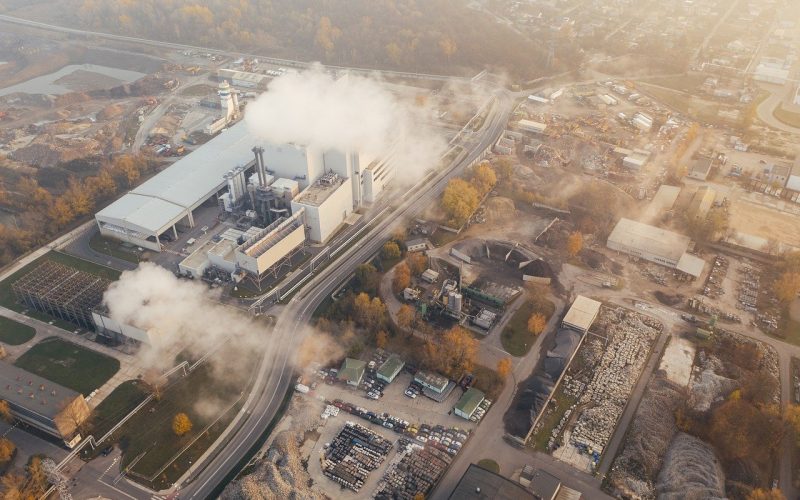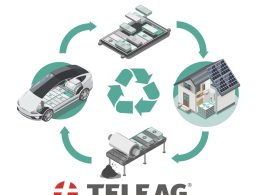As the UK begins to move towards its net-zero carbon emissions target by 2050, businesses in all sectors must reduce their CO2 output. According to the March 2021 Industrial Decarbonisation Strategy, the manufacturing sector accounts for a sixth of all UK greenhouse gas emissions, highlighting the work needed in the sector to reduce emissions.
It’s no surprise to see that manufacturing is one of the biggest contributors to carbon emissions in the UK due to the sector’s energy-intensive processes. While it’s not possible for the sector to completely eliminate those emissions, there are ways it can reduce them and balance them out to reach a point of carbon neutrality.
In this article, FPE Seals explore how using the right machinery and components is key to helping your manufacturing organisation not only reduce its greenhouse gas emissions but also save money in the long run.
Invest in quality machine parts
Many manufacturers will often opt for cheaper machinery and parts to minimise a hefty upfront cost, but this can end up more expensive in the long run. In many cases, cheaper machinery and parts are made with cheaper materials. This means that they’ll have a shorter shelf-life than higher-quality items, so you’ll be required to replace these parts more frequently. This also creates more waste, which has a serious impact on the environment.
Consider the equipment’s energy requirements
Some machines and their component parts run on fossil fuels, which are some of the biggest contributors to climate change. Switching to equipment that runs on renewable energy will save you money in the long run and allow you to dramatically reduce your carbon emissions.
The manufacture of certain materials is also especially energy-intensive, such as the production of liquid silicone rubber, which requires temperatures of 179–198oC. Other materials, like most plastics, are well-known for their reliance on fossil fuels. By reviewing the raw materials you work with and the products you create, you can further cut down your energy requirements and move to renewable sources.
Use multi-tasking equipment
A key way you can cut down on your energy costs and therefore your carbon emissions is to make use of multi-tasking equipment. These machines combine several processes – for example, cutting processes – which would have traditionally been carried out by multiple machines in one solution. This helps you reduce setup and manufacturing time dramatically by getting more processes done in one go.
Having fewer machines on the go for one project will reduce the amount of energy you require to produce materials or items, which has the double benefit of reducing your business’ energy costs and carbon emissions. It also means you’ll require fewer component parts for multiple machines. Fewer machines mean you can also make better use of your factory space and increase your business’ output efficiency.
Maintain your equipment effectively
We know that one of the best ways to extend the life of our manufacturing equipment is to maintain it effectively. Equipment maintenance will vary based on the machinery itself, but generally speaking, maintenance is straightforward. Setting up processes for qualified technicians to regularly review your machinery is essential, but there are steps you can take yourself.
Keeping your equipment and its component parts clean and free from debris is an essential step, because this can heavily impact its efficiency. In the shipping industry, energy-efficiency regulations have come into place that include keeping the propellors and other underwater parts of the ships clean, reducing waste heat production and the need for frequent new replacement parts.
Prevent energy-wasting leaks
One of the most common energy-wasting problems with manufacturing equipment is leakages. While checking your equipment is essential for general maintenance, including leak checks is recommended. This will allow you to spot and fix any leaks before they become a bigger problem. Using the right type of seal on your cylinder parts will help prevent leakages in the long run.
Embed sustainability into your supply chain
You’ve begun to address the sustainability of your business practices, and you’ve taken measures to reduce your carbon emissions. But can the same be said about your suppliers? If the businesses you’re sourcing your machinery and raw materials from aren’t sustainable, you may still be indirectly contributing to greenhouse gas emissions.
Many businesses are now including sustainability as a key requirement in their tender process, with others reviewing their suppliers based on their green credentials. A brand’s sustainability credentials are more important than ever, with research showing customers are seeking companies that are environmentally friendly. But large businesses including Nike and Adidas have come under scrutiny for poor practices in their supply chains. The fashion giants were found to use suppliers that discarded toxic waste in rivers in China, but the backlash was primarily aimed at those brands.
Sustainability and reducing carbon emissions is essential for all businesses in order for the UK to meet its net-zero target by 2050. As one of the biggest contributors to greenhouse gases in the UK, the manufacturing sector has a large role to play. By addressing the machinery and component parts your business uses, including how and where you source them, how you use them, and how you maintain them, you can reduce your emissions to support important environmental causes.
Sources
https://www.gov.uk/government/news/uk-enshrines-new-target-in-law-to-slash-emissions-by-78-by-2035
https://www.simtec-silicone.com/online-guides/lsr-life-science-industry/
https://www.bpf.co.uk/plastipedia/how-is-plastic-made.aspx
https://www.mazakusa.com/machines/process/multi-tasking/
https://www.imo.org/en/MediaCentre/HotTopics/Pages/Reducing-greenhouse-gas-emissions-from-ships.aspx









